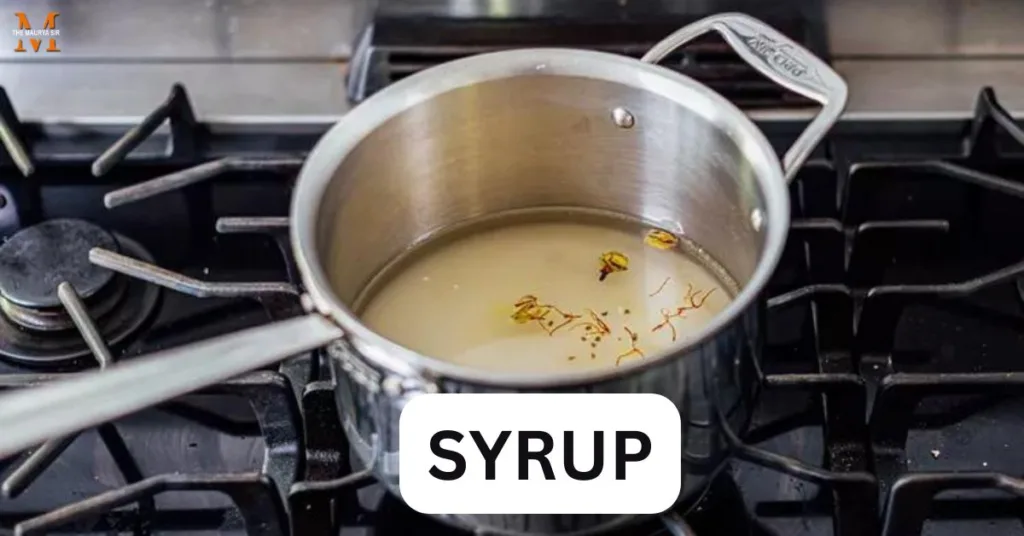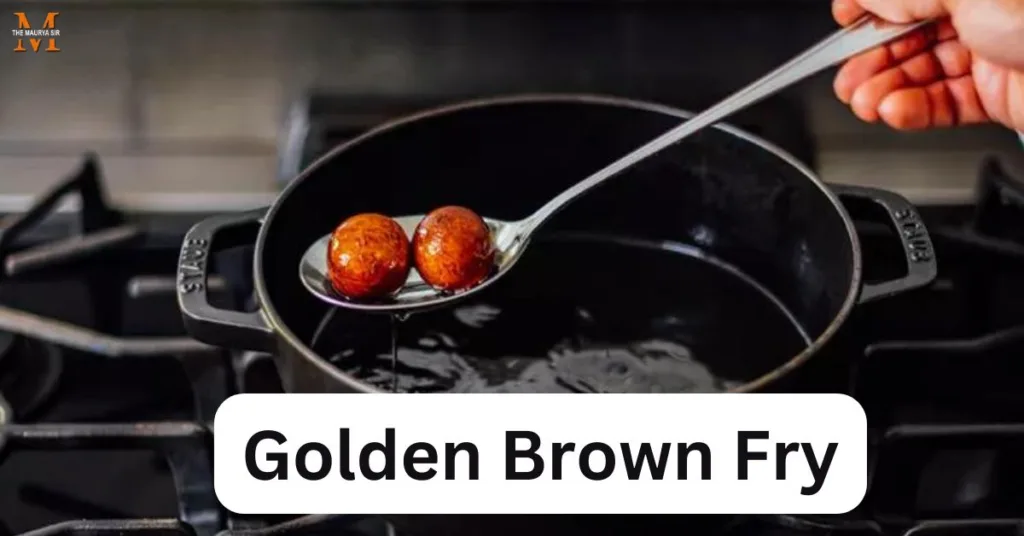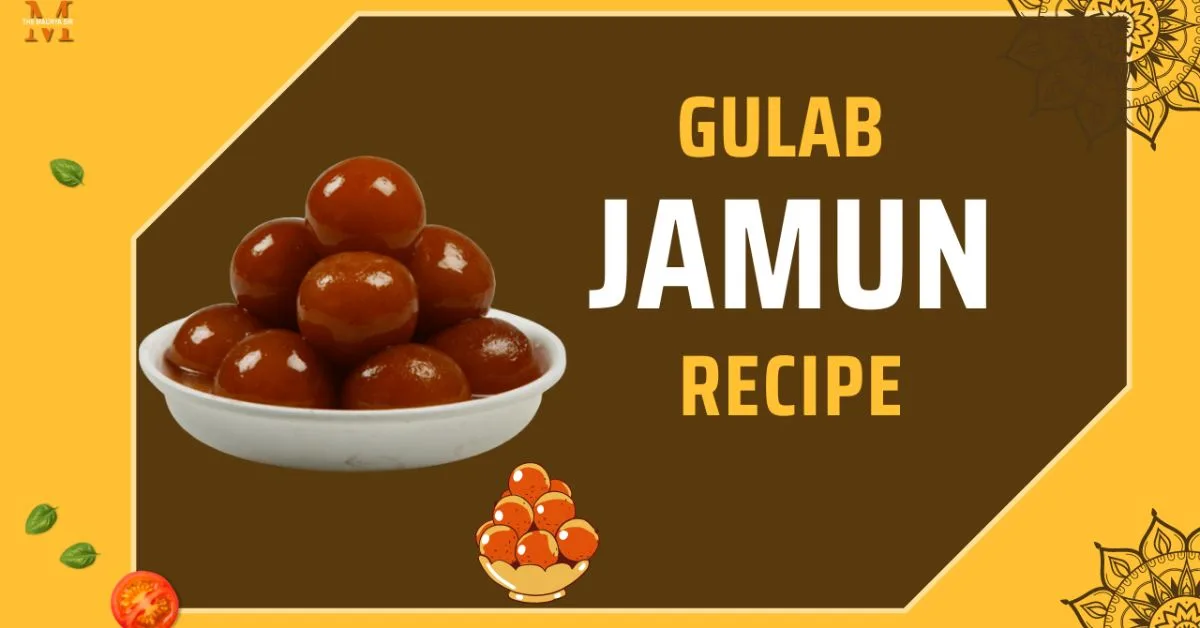Gulab jamuns hold a prominent place in the broad family of Indian desserts. They consist of small fried balls of milk-based dough that are served warm or at room temperature. These balls are soaked in syrup flavored with green cardamom, saffron, rose water, and other spices. I suppose their popularity originates from their straightforward yet wonderful composition. Since the name “gulab jamun” roughly translates to “rose water” and “black plum” (a sort of Indian fruit), it is crucial that the syrup has a floral, delicious flavor. In this article, we discuss all steps of the gulab jamun recipe for a new generation.
What Is Gulab Jamun?
Gulab jamun is a kind of funnel cake or doughnut, and as Michael Krondl points out in The Donut: History, Recipes, and Lore from Boston to Berlin, there are a few theories about where it originated in the Islamic world: either in ancient Persia, the Central Turkic regions, or during the rule of the Mughal Empire in India. While they share some similarities with doughnuts, such as being made of fried dough, I believe the unique components used in their creation distinguish them enough to warrant their category.
Let’s start with the gulab jamun recipe for a new generation
Gulab Jamun Recipe: Milk Solids: Khoya vs. Dry Milk Powder
Khoya, also known as khoa or Mawa, is a type of dried milk that is traditionally one of the key components of gulab jamun dough. To make khoya, gently cook a sizable pot of milk for many hours until all the water evaporates, leaving behind the milk solids. Before using it for the gulab jamun dough, finely grate the khoya. Indian grocery stores offer khoya in blocks. Additionally, sometimes chenna, similar to paneer but not pressed to remove excess liquid, is used as a substitute for khoya.
However, because non-fat dry milk powder is much more generally available in supermarkets, I decided to use it in place of khoya, paneer, or chenna for this dish. Non-fat dry milk has a comparable texture and flavor because it mostly consists of lactose and milk proteins.
Gulab Jamun Recipe: Incorporating Flour or Semolina
While the majority of gulab jamun, regardless of the milk source, consists of milk proteins, the dough also includes a small amount of flour and/or semolina. This addition helps the balls hold together and retain their shape during frying. Due in part to the semolina’s comparatively big grain size, which aids in reducing gluten development and results in tender gulab jamun, I’ve discovered that semolina works well.
Soak the semolina in milk before combining it with the other dough components because it doesn’t absorb much liquid. This keeps the gulab jams inside moist.
Remember that this dough is relatively dry and quite solid as it comes together, very different from a soft dough made with wheat. Overmixing or over-kneading the dough will overwork the gluten, leading to unappealingly hard gulab jamuns. As a result, you should be careful not to do either.
Hydrating the Dough
To hydrate the gluten and aid in the dough’s ability to hold together, the ingredients in the dough need some type of liquid. I’ve discovered that using milk and heavy cream together results in softer gulab jamun with wonderfully moist innards. The fat in the milk and cream also aids in shaping since it melts when heated by your hands’ palms, smoothing the dough’s surface as you roll it into tiny balls and making it simpler to mold. Due to their warm serving temperature and fluid dairy fat, the gulab jamuns’ final texture benefits as well. This reduces the likelihood that the interiors will be dry and chalky.
The Best Fats for Deep Frying Gulab Jamuns
Among all of these, my decision to use fat as a frying medium might be the most contentious. The traditional and most preferred choice of cooking fat for frying gulab jamuns is ghee, a form of clarified butter. Ghee’s roasted milk solids infuse the dessert with a distinct aroma of caramel and nuttiness. To prevent ghee from freezing, serve the warm gulab jamuns instead of at room temperature.
Due to the high amount you would need and the cost, I decided not to use ghee in this recipe and instead call for grapeseed oil. Choose a neutral oil, avoiding canola if sensitive to fishy smells. Indian grocery stores offer affordable, larger ghee bottles for frying. (Take note that the cooking temperature won’t change depending on the type of fat you use.)
Gulab Jamun Recipe: The Soaking Syrup
Fry the gulab jamuns before dipping them in a spiced warm simple syrup. I cook sugar, water, and spices in a saucepan together to release the flavor molecules from the spices. In my basic selection of spices, I include saffron for its vivid color and aroma, green cardamom for its cold, sweet aroma, and cloves for its comforting aroma. Add rose water at the end for its fragrant flavor, as it doesn’t need heat to release its scent. Prevent crystallization of sugar syrup by adding a touch of lemon juice (or substitute with cream of tartar). The syrup remains smooth by preventing crystallization through the sugar “inversion” caused by the acid.
Related Article
Top 10 High-Protein Foods for a Healthy Diet
Top 10 Fat-Free Foods to Help You Stay Healthy
Test the syrup by pushing a small drop between two fingers, and observing the formation of a soft, sticky, syrupy thread. Take caution due to the hot syrup; performing the same test with two small teaspoons can be slightly safer. Additionally, consider the temperature of the fried gulab jamuns when immersing them in the syrup. Warm the gulab jamuns to allow easy syrup absorption, avoiding scorching that may result in a bitter exterior. Before adding them to the pot of warm syrup, I advise giving them about 30 seconds to cool slightly on a dish.
Before serving, soak the gulab jamuns in the syrup for at least four hours, with overnight soaking being even better. After the initial heated soak, you can place them in the refrigerator. Before serving, warm gulab jamuns in syrup, garnish with pistachios, almonds, or rose petals, and drizzle with syrup. (I like the texture of candied rose petal jam or gulch, which I find much more pleasant than the petals; it’s available at most Indian grocery stores). Occasionally, serve gulab jamuns with a scoop of ice cream, creating a delightful contrast between warm and cold temperatures. You learn the gulab jamun recipe and enjoy eating with your family and relatives.
Gulab Jamun Recipe Details
- Prep: 55 mins
- Cook: 25 mins
- Active: 60 mins
- Soaking Time: 4 hrs
- Total: 5 hrs 20 mins
- Serves: 4 to 6 servings
Stuffing for the Syrup:
- 2 cups (480ml) water
- 14 ounces (2 cups; 400g) sugar
- 1 tablespoon (15ml) lemon juice
- 1 pinch (15 strands) saffron
- 4 green cardamom pods, crushed
- 2 whole cloves
- 1 teaspoon (5ml) rosewater
For the Jamuns:
- 1.4 ounces (1/4 cup; 40g) fine semolina flour (see note)
- 1/4 cup (60ml) milk
- 5.3 ounces (2 cups; 150g) of non-fat dried milk powder (see note)
- 1 teaspoon baking powder
- 1/2 teaspoon ground green cardamom
- 1/8 teaspoon Diamond Crystal kosher salt; if using table salt, use half as much by volume
- 6 tablespoons (90ml) heavy cream, divided plus more as needed
- 3 cups (720ml) grapeseed oil, for frying (see note)
- 3 tablespoons (25g) chopped pistachios or cashews, for garnish (optional)
Cooking Directions of Gulab Jamun Recipe
For the Syrup:
In a medium saucepan, mix the water, sugar, lemon juice, saffron, cardamom, and cloves. While stirring regularly with a rubber spatula, bring the mixture to a boil over medium-high heat, then reduce the heat to a simmer and cook for 5 minutes. Test the syrup by placing a drop between two teaspoons and pulling them apart to observe the formation of a sticky, thin thread. After taking the mixture off the heat, toss in the rosewater, cover it, and keep it warm.

For the Jamuns:
Ghee or oil should be heated to 325 degrees Fahrenheit (160 degrees Celsius) in a medium pot or Dutch oven. Use parchment paper to line a baking sheet with a rim. Mix the milk powder, baking powder, cardamom, and salt in a sizable basin. Use your hands or a bowl scraper to break up any lumps or pieces that may have remained in the strainer basket as you sift the mixture twice through a fine-mesh strainer onto the prepared baking sheet.
For Mixup:
Make a small well in the center of the re-mixed, sifted ingredients in a large bowl. Place the parchment paper back on the baking sheet and set away. Use clean hands to combine the ingredients to create a stiff but sticky dough in the center of the well after adding the semolina-milk mixture and 1/4 cup (60ml) of cream. Add additional cream as necessary, 1 tablespoon (15 ml) at a time, until dough forms if the mixture seems dry. The gulab jamuns will become very dense if you vigorously knead the dough; instead, gently press the ingredients together with your fingertips to make the dough.

Making Small Round Pieces:
Take 1 spoonful of dough and roll it between your palms to produce a round, even jamun that is 1 inch (2.5 cm) in diameter. The dough will initially seem sticky, but the warmth of your hands will assist to soften and make it more malleable. Wet your palm with a few drops of heavy cream to help shape and smooth out the ball if any cracks emerge on the surface. Repeat the procedure of creating jamun with the remaining dough until you have 18 balls total. Place the formed jamun on the reserved parchment-lined baking sheet.

Deep Fry:
Heat ghee or oil to 325 degrees Fahrenheit (160 degrees Celsius) in a medium pot or Dutch oven. Use paper towels to cover a plate. Use a slotted spoon to quickly move each ball as you add it to the oil, preventing them from sticking to the bottom of the pot. Working in two batches, carefully add half of the dough balls, one at a time, to the heated oil. For even cooking, stir the balls occasionally with a slotted spoon as you cook the jamun for about 3 minutes, or until they are golden brown all over. Transfer to a dish lined with paper towels using a slotted spoon, and then give it 30 seconds to rest. Place cooked jamun in the fragrant syrup and cover. With the remaining dough balls, repeat the process.

Soak in the Syrup:
Cover the jamuns and let them soak in the syrup for at least four hours and preferably overnight. (After the initial 4-hour soak, you can refrigerate the gulab jamuns with the syrup.) Gradually heat the gulab jamuns in the syrup over low heat before serving. Serve on a tray or plates, generously drizzle with syrup, and optionally sprinkle with nuts. Serve right away.

Notes
This Gulab Jamun recipe was tested with both Nestle and Bob’s Red Mill brand dried milk powder and Bob’s Red Mill semolina.
You can swap out grapeseed oil for ghee or another flavorless oil. If using ghee, serve the gulab jamuns warm to prevent the fat from solidifying and coating them in an unappealing way.
Make-Ahead and Storage
You can store the gulab jamuns in an airtight container in the refrigerator for up to three days after covering them in syrup.
Also Asked by People (FAQs)
A mixture of components is referred to as gulab jamun mix and is used to make the Indian dessert known by that name. Skimmed milk, maida, butter, rava, baking soda, and cardamom make up the Gulab jamun mixture. There are numerous brands of these on the market.
Gits Gulab Jamun Dessert Mix. The Gits Gulab Jamun Dessert Mix comes in box packaging.
Chitale Instant Gulab Jamun Mix.
MTR Ready Mix Gulab Jamun.
Nilon’s Instant Mix Gulab Jamun.
Aashirvaad Gulab Jamun Instant Mix.
Haldi Ram’s Gulab Jamun Instant Mix
Traditionally, gulab jamuns are fried in ghee. You can also use oil, though. As an alternative, you can fry while incorporating a few tbsps of ghee into the oil. This will have a flavor that is comparable to that of ghee-fried gulab jamuns.
Semolina (suji), clarified butter (ghee), and milk are combined to make a dough that is then formed into balls, deep-fried, and dipped into a simmering sugar syrup.
Juicy, delectable paneer gulab jamun is produced by soaking paneer balls in sugar syrup and flavoring it with saffron. During Diwali and other important events, paneer gulab jamun is a popular dessert that may also be made using store-bought paneer.



